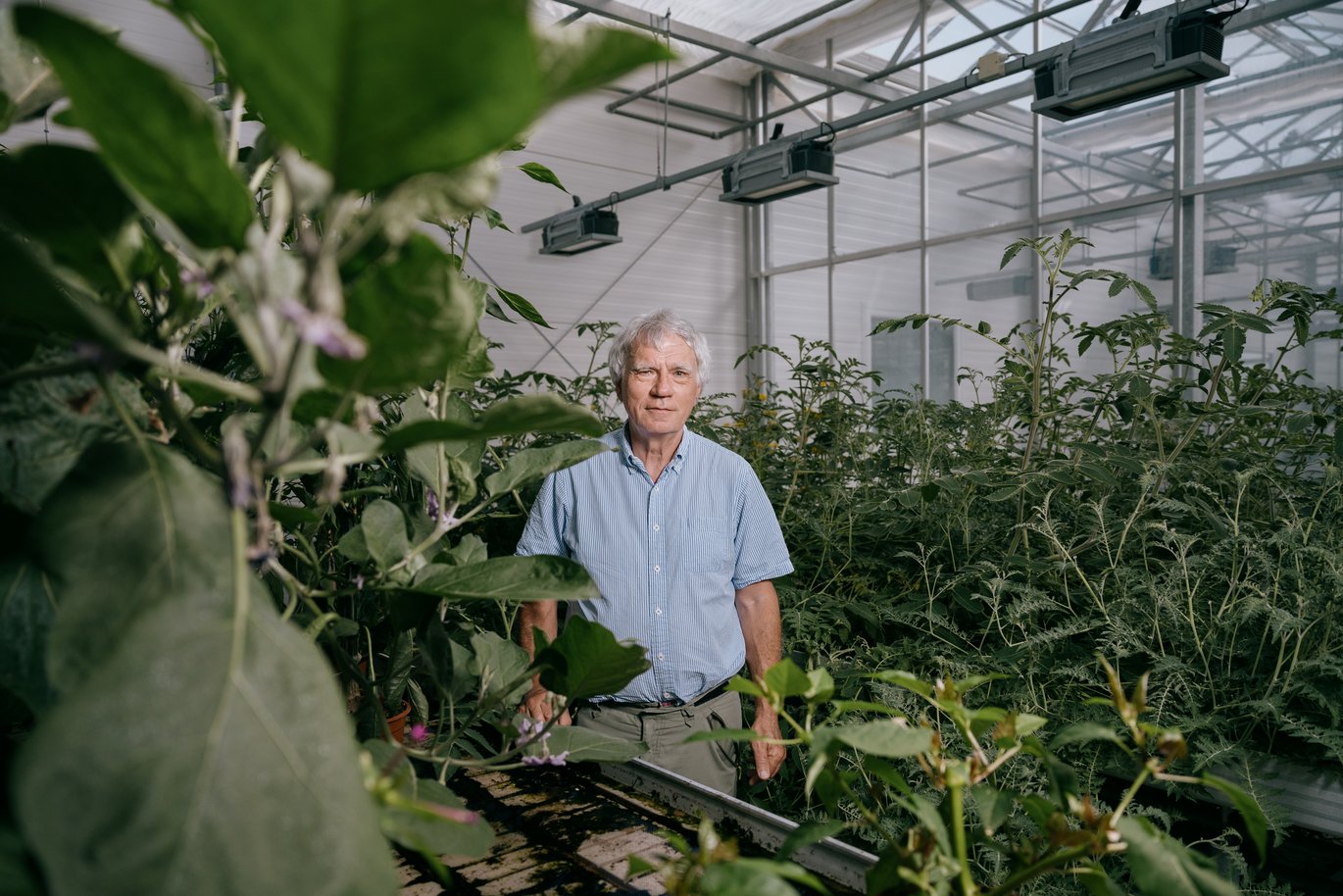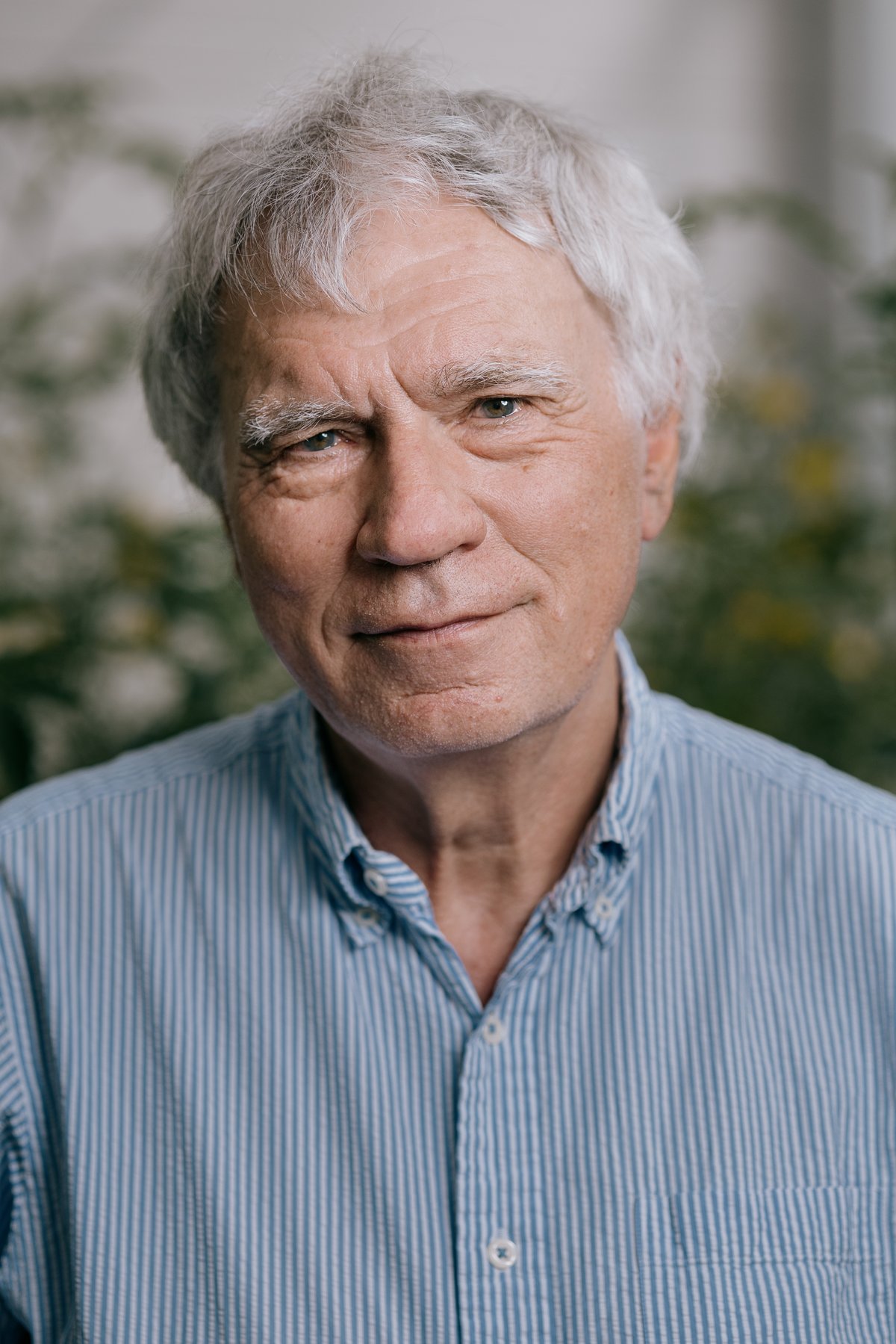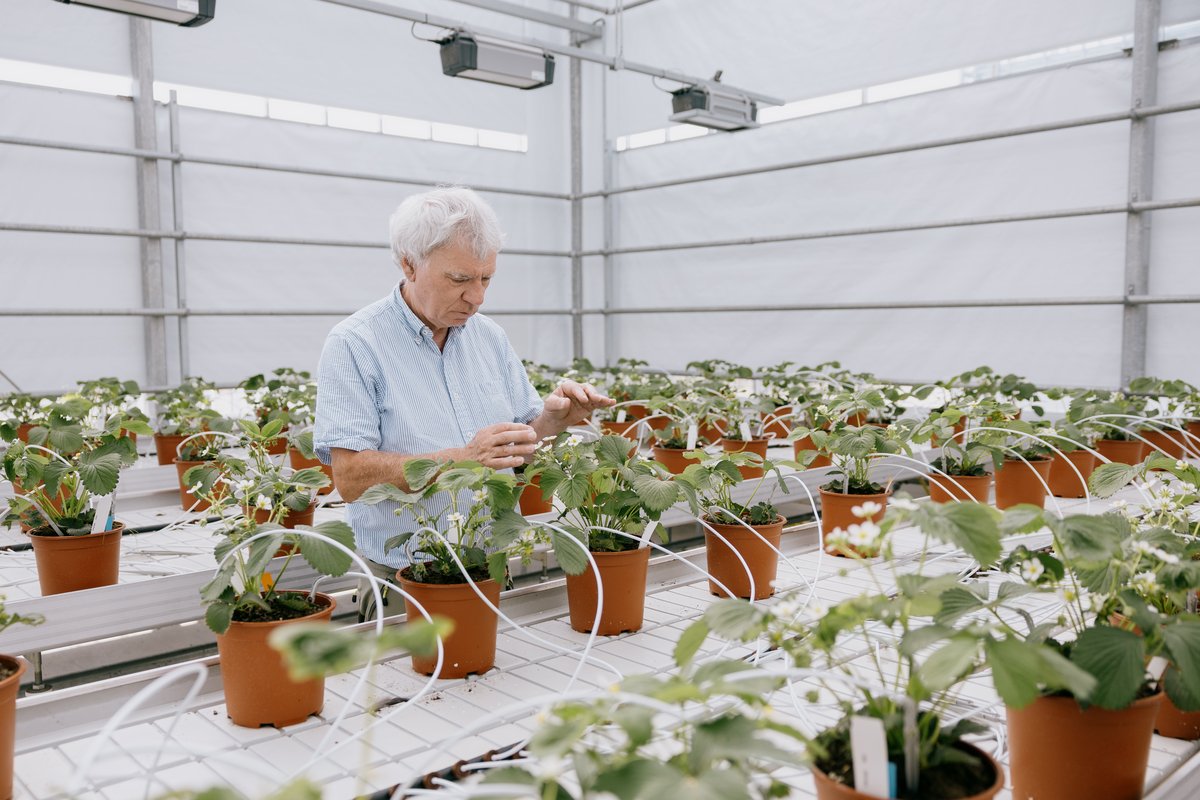AU FOOD’s “System-Oriented Anarchist” Celebrates 40th Anniversary
Carl-Otto Ottosen celebrates his 40th anniversary on September 1st. Despite working in the same field for four decades, he has never had a dull moment.

Among strawberries and chili plants in the high-tech greenhouses in Skejby, the Department of Food Science’s “grand old man”, Carl-Otto Ottosen, is walking around, checking on the plants.
He has been part of the team for 40 years, even before food research was associated with what today is known as Aarhus University.
He had barely learned to walk before he set foot in a greenhouse for the first time. His family owned a nursery, and he spent several summers there among houseplants and tomatoes.
Double degree
His interest in plants only grew over the years, and he had no doubts that pursuing a degree in Biology at the university was the right thing to do after high school.
“I think I considered becoming a lab technician for a total of fifteen minutes,” he says with a laugh.
The real doubts materialized later, and led him down a path to what is today an impressive career in academia.
In 1983, he defended his master’s thesis in botany, specialising in honeysuckle pollination.
But during his studies, he started doubting his choice due to limited job prospects, prompting him to pursue a second master’s degree at the agricultural college, which he finished in 1984.
“My master’s thesis focused on how many leaves it is optimal for tomato plants in greenhouses to have. After I finished my presentation, an older gentleman stood up and said: “If that’s correct, I can save a million kroner a year.”
The older gentleman turned out to be one of Denmark’s largest tomato growers.
Green leaves and a certain size
Throughout his career, Carl-Otto has worked with many different plants, from strawberries to birch trees.
“I usually say that I don’t care what species I work with, as long as it has green leaves and a certain size,” he says.
However, some plants proved more challenging than others. Rooibos, a South African bush used for tea, can still give him nightmares:
“Rooibos is probably the most difficult plant I have worked with. Eventually we had to import five kilos of sandy soil from its natural habitat to be able to get it to grow – which was all due to our talented gardener Ruth,” he says.
But even though not all plants have been equally cooperative, it has never been difficult for him to find meaning in his work.
Turn on and off as the wind blows
Reducing resource consumption in greenhouse production has been an important part of his research.
But that is actually only one half of his research area, he explains.
“My research has two legs: The first is optimising plant growth while minimising resource use,” he says.
One of his proudest achievements has been helping industry reduce greenhouse energy consumption by 30 percent.
Currently, he’s intrigued by better utilising low-cost electricity periods.
“Then you can turn power on and off when the wind blows, or when the sun shines,” he says.
Climate-Resistant Varieties
“The other leg of my research involves testing and selecting varieties that are most robust against climate change,” he says.
In this work a process called phenotyping is used. A phenotype refers to a plant’s appearance and characteristics, is influenced by both genetics and the environment — the conditions in which the plant grows, and the inherent properties encoded in its genes. In phenotyping the plants are selected based on these characteristics.
Phenotyping is crucial when assessing a plant’s climate resilience, because this is not solely about genetics.
In one of the largest projects, where he and his colleagues have used phenotyping, they screened 1247 types of wheat to identify those most resistant to climate change.
This effort has helped discover which varieties should be used in the future.
Even though his career has already lasted several decades, there are still more exciting projects than there are hours in the day. The professor often has to hold back from pursuing exciting ideas that cross his mind or his desk.
Exciting Workplace and Great Colleagues
Asked about whether he enjoys working in the new facilities in the greenhouses at Agro Food Park, Carl-Otto chuckles.
“I’ve been involved in shaping how things look here, so it would be shooting myself in the foot to say they aren’t good,” he explains.
“We’re a highly specialised department, and we have fantastic facilities,” he emphasises.
He finds that both the physiological and technical equipment, the Food Departments possesses as well as the expertise, are in demand—especially in large collaborative projects.
“A French researcher once called to inquire if we had equipment for dosing CO2. When we replied, “Certainly,” he immediately invited us to participate in a project,” he says.
Moreover, the institute itself boasts a breadth of expertise, with various competencies gathered in one place.
“One thing is the quality of the facilities, but the staff is also extremely competent,” he says.
Carl-Otto has also experienced significant freedom in choosing his research projects.
“I’ve always been allowed to define my own projects. No manager has ever said, “Now you have to do this,” and that autonomy is why I’ve stuck around,” he says and elaborates:
“I have stayed, because no one has tried to control me. Maybe because it is an impossible task. I once took a personality test that labeled me a “system-oriented anarchist. When I told my wife about it, she said it sounded very accurate,” he says with a smile.
Future of Food
According to Carl-Otto Ottosen, defining his and the department’s role in the future isn’t difficult.
“We must continue researching how to use fewer and fewer resources to produce better and better food,” he asserts.
Ensuring food stability is also a priority for him.
“One approach to climate-proofing Danish vegetable production is to cultivate more vegetables in greenhouses. Overall, our aim is to develop local food production,” the professor states.
“Combining that with screening for climate tolerance will guide us toward the most suitable varieties. I think that will also be important in the future,” he says.
My Garden on Fyn
While most of his work centers on plants, gardening also occupies a significant part of his free time.
He and his wife recently acquired more land to expand their biodiverse garden in the lush landscape on Fyn.
Currently, 40 different bird species occupy the garden, and the professor is eager to see what animals the pond they established in the backyard this spring will lure in.
“We’re always looking for new species,” he says.



